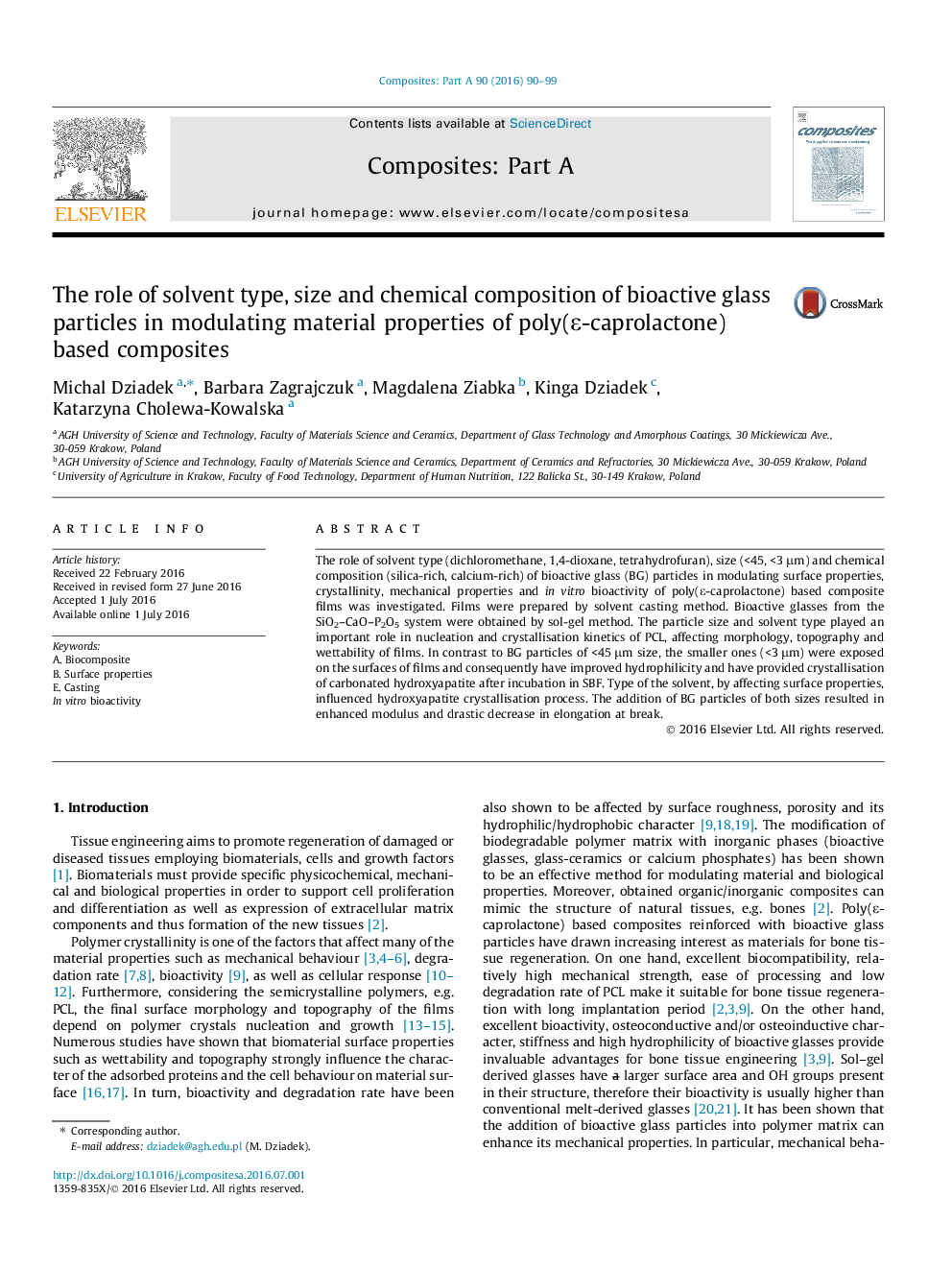| Article ID | Journal | Published Year | Pages | File Type |
|---|---|---|---|---|
| 7890058 | Composites Part A: Applied Science and Manufacturing | 2016 | 10 Pages |
Abstract
The role of solvent type (dichloromethane, 1,4-dioxane, tetrahydrofuran), size (<45, <3 μm) and chemical composition (silica-rich, calcium-rich) of bioactive glass (BG) particles in modulating surface properties, crystallinity, mechanical properties and in vitro bioactivity of poly(ε-caprolactone) based composite films was investigated. Films were prepared by solvent casting method. Bioactive glasses from the SiO2-CaO-P2O5 system were obtained by sol-gel method. The particle size and solvent type played an important role in nucleation and crystallisation kinetics of PCL, affecting morphology, topography and wettability of films. In contrast to BG particles of <45 μm size, the smaller ones (<3 μm) were exposed on the surfaces of films and consequently have improved hydrophilicity and have provided crystallisation of carbonated hydroxyapatite after incubation in SBF. Type of the solvent, by affecting surface properties, influenced hydroxyapatite crystallisation process. The addition of BG particles of both sizes resulted in enhanced modulus and drastic decrease in elongation at break.
Related Topics
Physical Sciences and Engineering
Materials Science
Ceramics and Composites
Authors
Michal Dziadek, Barbara Zagrajczuk, Magdalena Ziabka, Kinga Dziadek, Katarzyna Cholewa-Kowalska,
